The RADB whois server provides information collected from all the registries that form part of the Internet Routing Registry. These collected registries provide information on most of the networks and ASs routed in the Internet today. The query server is easy to use. For example, the following command queries the RADB RPSL database for information about a network with the address 128.223.0.0/16. (The -h parameter tells the whois client on your machine that you want to talk to the IRRd whois server):
whois -h whois.radb.net 128.223.0.0/16The output includes an RADB "Route object" containing information about the network:
route: 128.223.0.0/16
descr: UONet
University of Oregon
Computing Center
Eugene, OR 97403-1212
USA
origin: AS3582
mnt-by: MAINT-AS3582
changed: [email protected] 19960222
source: RADBThis example is taken from RFC 2650 "Using RPSL in Practice. You can also request information about a particular AS:
whois -h whois.radb.net AS8The aut-num object is shown below:
aut-num: AS8
as-name: RICE
descr: Rice University AS
import: from AS2914
action pref=100;
accept RS-ALL
import: from AS4557
action pref=100;
accept RS-ALL
import: from AS7276
action pref=100;
accept RS-ALL
import: from AS3356
action pref=100;
accept RS-ALL
export: to AS2914
announce ANY
export: to AS3356
announce ANY
export: to AS4557
announce AS8
export: to AS7276
announce ANY
tech-c: CF2182
admin-c: FG50
notify: [email protected]
mnt-by: MAINT-AS8
changed: [email protected] 20050205
source: RADBAut-num objects provide a description of an Autonomous System's routing policy. The "import" field in the example above tells you what routes are imported by AS8; the "export" field tells you what routes it exports.
Query Options
There are two different sets of query flags that can be used to query the RADB. whois.radb.net supports queries with both types of flags:
- ! RADB Query Flags
- - RIPE Query Flags
In any one query you cannot combine a RIPE flag with a RADB flag.
If you plan on making a large number of queries please invoke a persistent tcp/ip session. This is done by telneting directly to whois.radb.net and issuing the !! command. This will spare our server having to establish and teardown connections for every query.
Example:
[darkstar ~]$ telnet whois.radb.net 43
Trying 198.108.0.18...
Connected to whois.radb.net.
Escape character is '^]'.
!!
192.168.0.0/16
% No entries found for the selected source(s).
198.108.62.0
route: 198.108.0.0/16
descr: MERIT Network Inc.
descr: 4251 Plymouth Rd
descr: Ann Arbor
descr: MI 48105-2785, USA
origin: AS237
mnt-by: MAINT-AS237
changed: [email protected] 20001115
source: SAVVIS
q
Connection closed by [example] host.IRRd-Specific Commands
We support the following IRRd commands.
!g Get routes with specified origin.
Example:
% whois -h whois.radb.net '\!gas237'
!6 Get IPv6 routes with specified origin. e.g., !6as1234. This is the
IPv6 equivalent of the '!g' command.
!i Return members of an as-set or route-set. Optionally,
recursively expand members of all sets within the named set.
!iAS-ESNETEU # non-recursive, don't expand
# any embedded as-set's
!iAS-ESNETEU,1 # expand any embedded as-set's
!iRS-FOOBAR,1 # recusive expansion of a route-set
!j performs distributed checks on database synchronization.
This command makes it possible to view the mirror status
(oldest journal number, CURRENTSERIAL) for a database.
If a : is present after the range, the database was last
exported at that serial number. For example:
!jRADB,RIPE,,
!j-* # Show all databases
Output:
A
RADB:Y:1000-2000
VERIO:Y:3500-4500:4000
RIPE:N:0-666
FOO:X:
BAR:X:
C
Y means that the database is mirrorable.
N means that the database is not mirrorable, but the
local IRRd server is reporting the current serial number.
You can use this option to check for updates. The first
number will _always_ be zero. The second number may be
zero if the CURRENTSERIAL file doesn't exist.
X means that the database doesn't exist, or the local
server is denying information about an existing database
for administrative reasons.
Returned databases are canonicalized to upper case.
!m Match an object of the specified type with the specified
key. Return immediately after first match.
Example, !maut-num,as701 #lookup aut-num object
Example, !mmntner,maint-as237 #lookup mntner object
!n Identify the tool for statistics/logging purposes.
Example, !nRoe
!o Display all objects maintained by a given mntner name.
Example, !oMAINT-AS237
!q Quit the IRRd session.
Example, !q
!r Perform route searches.
Default finds exact prefix/len match.
o - return origin of exact match(es)
l - one-level less specific
L - all less specific
M - all more specific
Example, !r141.211.128/24,l
!s Set the sources to the specified list.
Default is all sources.
Default search order is the order in which sources are
configured in the irrd-conf file.
Example, !sradb,ripe,savvis
lc - show the currently selected sources
Example, !s-lc
!v Provide the IRRd version number.
Example, !v RIPE-Specific Commands
We support the following RIPE commands.
-s Set the sources to the specified list.
Example -s radb
-m First level more specifics of a route object
Example: -m 65.88.176.0/20
-M All level more specifics of a route object
Example: -M 65.88.176.0/20
-l First level less spefics of a route object
Example -l 65.88.176.0/20
-L All levels less specfics of a route object
Example -L 65.88.176.0/20
-i mnt-by Find objects associated(mnt-by) a specified maintainer
Example -i mnt-by MAINT-AS237
-i origin Find objects with a specified origin AS
Example: -i origin AS237
-t Show the template for specified object type
Example: -t route
-k Establish a persistent connection
Like the !! command, this prevents the closure
of the connection after the initial query
-K Return only primary key for specified object
Example: -K MAINT-AS237
-T Return only objects of specified type
Example: -T route 65.88.176.0/20
-g for mirroring purposes
